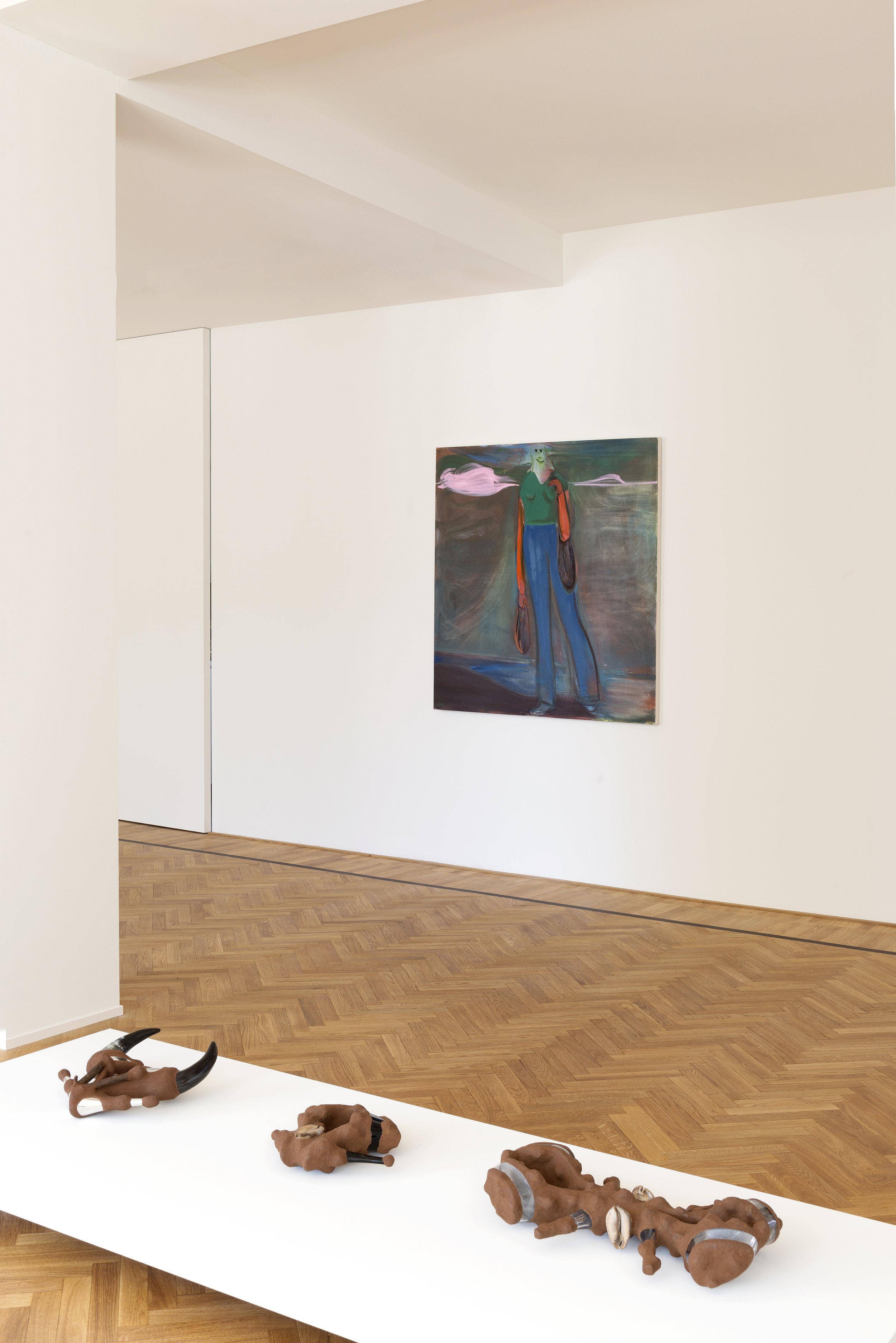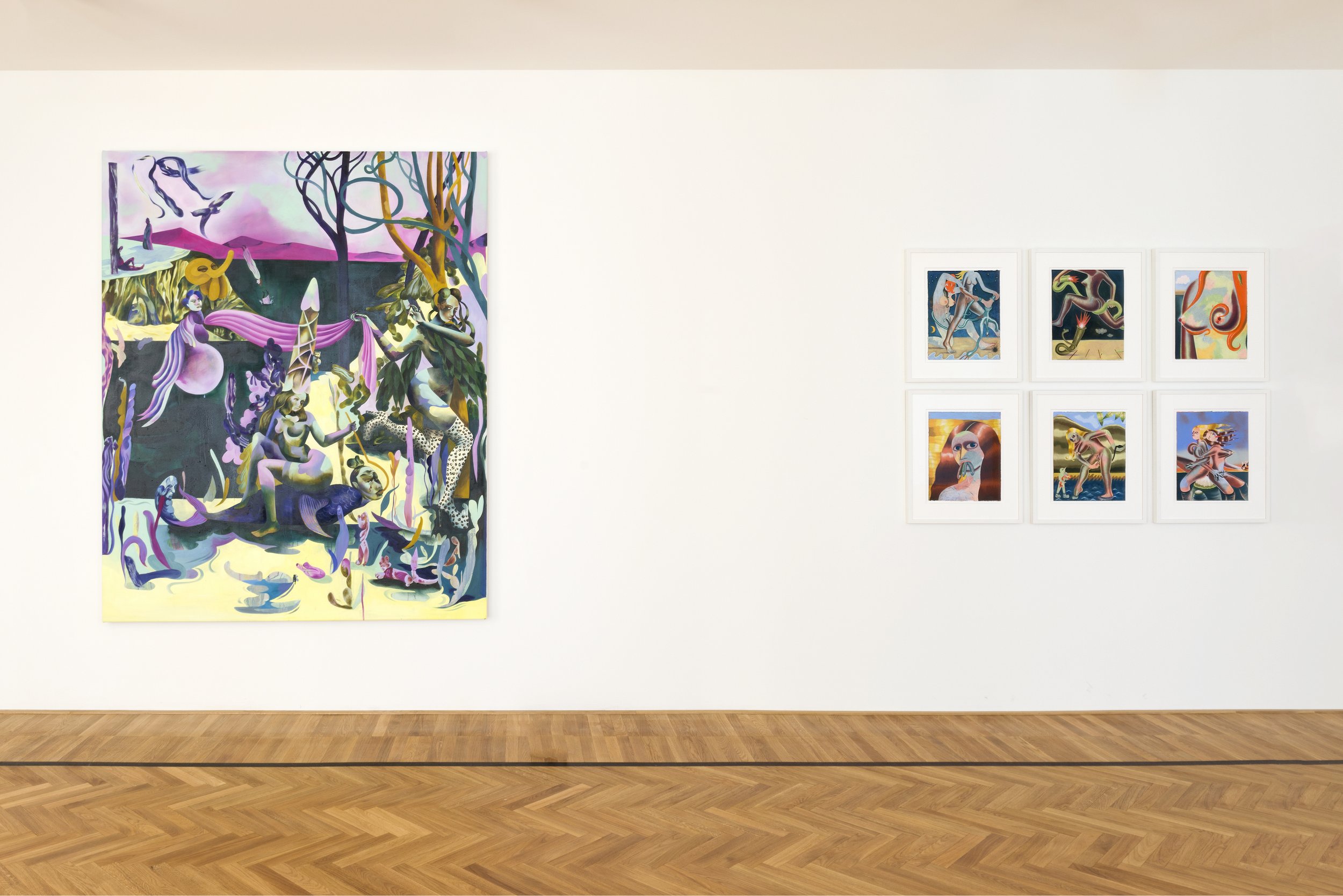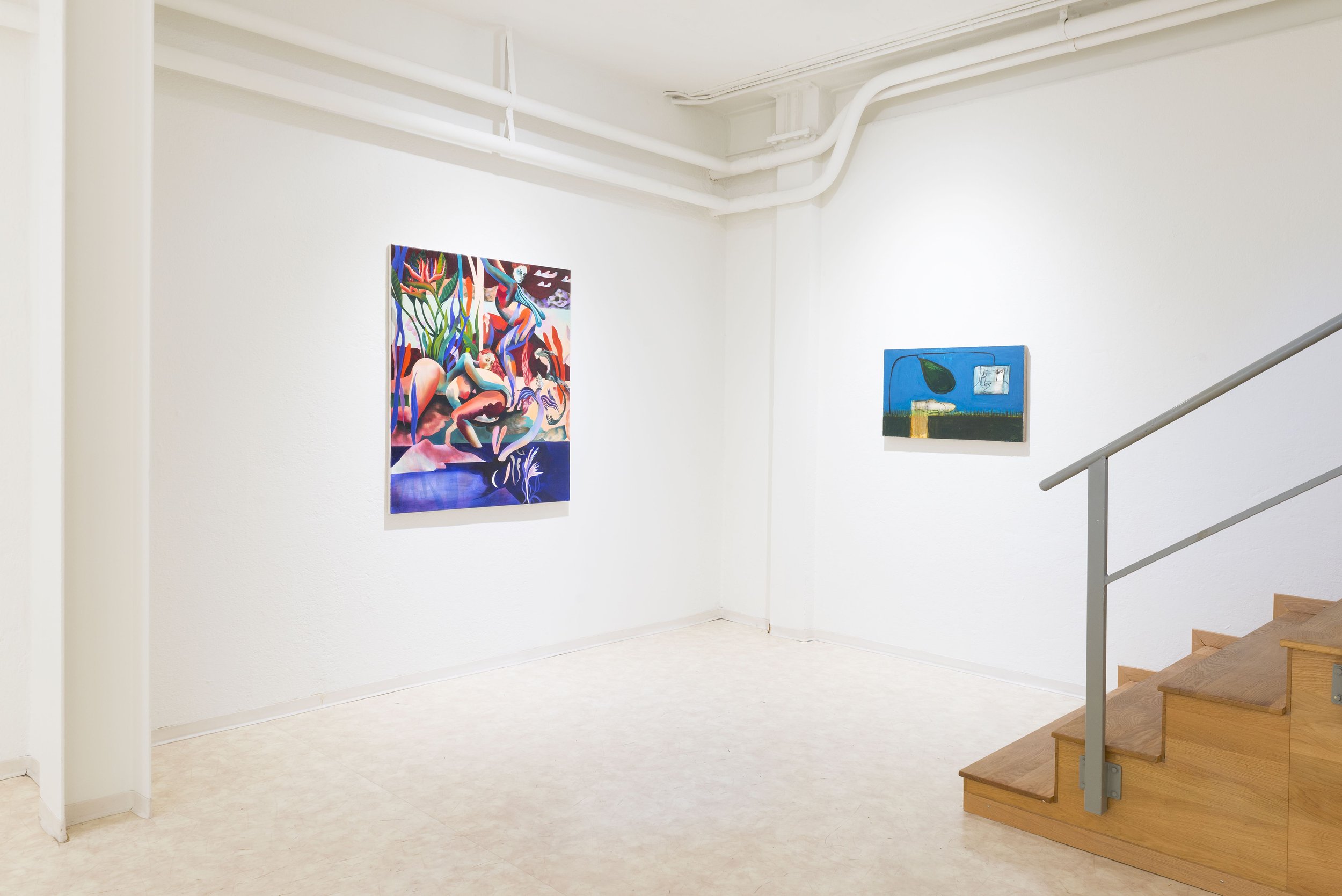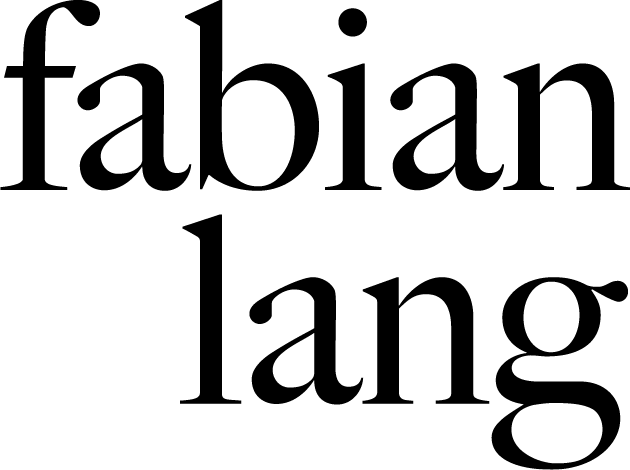The Self, The Work, The World
SARA ANSTIS | HEIDI HAHN | MERNET LARSEN | JESSIE MAKINSON | MIRA SCHOR | WANGECHI MUTU | GRACE WEAVER
9 June - 21 September 2019









exhibited works:
press release
[PDF]
Fabian Lang cordially invites you to the inaugural exhibition of his new gallery, which features the work of seven exceptional artists. All of the artists featured in this show are engaged in telling the story of their experience of their reality - of our realities. The politics of that context should be clear enough to anybody who does not wilfully turn a blind eye to the world. Yet here there are no polemics; no tired didactical responses to history. Here are created worlds and narratives in which our own often problematic reality can be rephrased and readdressed. Here it can be experienced anew, through new eyes. It can be deformed, mutated and joyfully mocked. This is a storytelling that takes control and asks us to enter unfamiliar ground. There are fictions of depth and complexity here, all expressed in very different ways, but all ask us to suspend our assumptions and allow ourselves to be drawn in.
Sara Anstis’ series By the Sea is guided by the sensation of swimming in waters of tentacular depths, and of drying out on the sand. These mysterious, soft pastel dramas unfold by a body of water and under a canopy of stars, and yet each is framed and focussed by the artist as a series of interactions with a slick skinned being of protean forms. Anstis is at work developing a world. Its subjects are powerfully sexualised, hybrid figures. They are confidently inscrutable; aware and mischievous. This is a world in which the brazen female gaze is returned, shameless and fantastical.
Jessie Makinson’s work is similarly transgressive, although here we are asked to move into and out of the pictorial frame, as we take in the tumultuous whole while peering into the strange and busy narratives unfolding within. The rich play of forms and colours initially resolve into a dynamic movement, but within, a strong and often occult figuration emerges from abstraction. There is a surreal, fairytale quality here, as well as a mischievous grotesque. Breugel and Bosch are never too far, although there is a sullenness here that belies the energy of Makinson’s technique. The faces are somehow bored, and somehow borrowed, which is all the more affecting as they twist into the deformed and elegant figures of their own creation myth.
Wangechi Mutu’s sculptural works echo this predilection for the mutative. Humanity is here framed by an evolutionary pathogenesis that marries a raw and earthen materiality with a grimly slick one. Formative species narratives are moulded with scientific accounts, creating crafted metaphorical objects that tell uneasy stories. At times they seem even accusatory, as if these sculptures have been willed from the earth in order that we may face them. They contain a language and a memory at once incoherent and unavoidable.
Mernet Larsen’s triptych of studies for her painting Yellow Bus seem to refer more to architecture than to the figure. They conjure El Lissitzky’s dynamic planar compositions, as well as the narrative stylization of twelfth-century Japanese, and even early Renaissance painting, as they play with possibilities of parallel perspective, shifting and folding pockets of space. Larsen uses these developmental studies to plot the vertiginous spaces she inhabits so uncannily. They are familiar scenarios of human interaction; realities analogous to and yet so alien from our own. And yet this approach, developed as it has been over the last forty years, always impresses a feeling of reaching toward, and not from life.
Heidi Hahn’s work shares in this unwilling detachment. Her nebulous figures here seem invested with a singular yet unresolved purpose. Their faces are only hinted at; the definition of their forms bleed into their surrounding. There is a nervous energy and elusive sense of urgency to them, a spontaneity that ensures an evasion of the pre-determined. Hahn’s work engages with the story of art’s attachment to the female body. The characters that populate her paintings all have relatives, stretching back through a variegated history of art.
Grace Weaver presents portraits of female figures engaged in seemingly mundane rituals. The girls she depicts are not necessarily drawn from life, but are rather to be considered archetypes of feminine self-presentation. They are placed in once-private spaces. They apply make-up; they cook; they eat; they prepare. These are all spaces into which the digital has opened windows. There is a melancholia here too, perhaps suggesting a frustrated will to perfect. Within the discourse of painting, Weaver’s ambition is to contribute a voice that fuses art historical and pop cultural references into a new language that is emphatically feminine, championing the aesthetics of cuteness, whimsy, and girliness. Her protagonists are caught between identities, taking tentative steps towards self-definition.
Mira Schor also uses the avatar as a means by which animate her often darkly funny meditations on mortality, power and language. In recent years she has worked these themes into cartoon-like situations in which a schematically drawn figure reads, walks and thinks in a diagrammatic relation to nature, theory and politics. Schor creates a sense of precarity as this figure negotiates themes and creative pressures so great that this approach seems the only way to contain them on one field. In The Self, The Work, The World, from which this show takes its name, Schor addresses the task of any artist - or indeed person - as being that of working out what that relationship between those three great arenas of perception means to each of us.
There is an elusive quality to so much of the work in this show, and yet it is never coy. There is a confidence and inventiveness here that does not hide behind beauty, but has rather mastered its language in the service of what it desires to express. It is work borne out of observation and self-awareness; work seeking to address much larger subjects than the development of the painted plane or sculpted object. And yet it does not treat these subjects as concepts alone, cold and isolated from personal contact. The self; the work; the world - a loop feeding back into itself, not as tautology, but as a practice of experience.


























